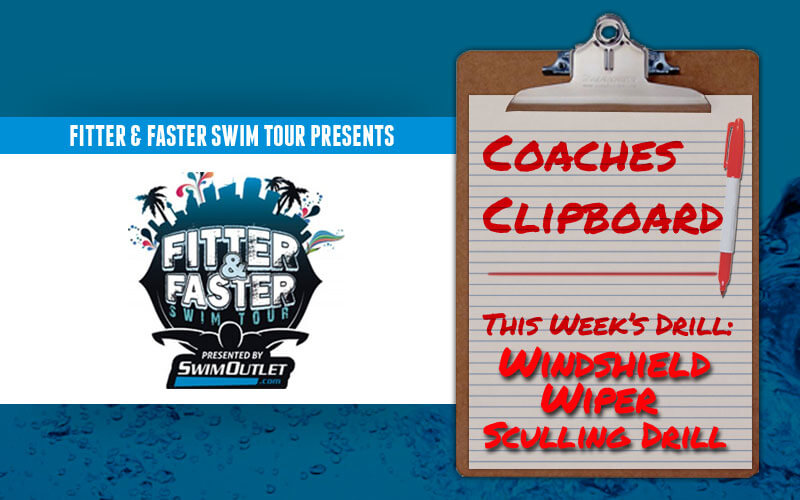Fitter And Faster Swim Drill Of The Week: Windshield Wiper Sculling

Welcome to the “Swim Drill of the Week” sponsored by The Fitter and Faster Swim Tour presented by Swimoutlet.com. Swimming World will be bringing you a drill, concept, or tip that you can implement with your team on a regular basis. While certain weeks may be more appropriate for specific levels of swimming (club, high school, college, or masters), Drill Of The Week excerpts are meant to be flexible for your needs and inclusive for all levels of swimming.
This week’s drill is windshield wiper sculling, a drill primarily used with breaststroke in mind but does have carryover to other strokes. To do this drill, push off the wall and bring your arms perpendicular to your body (i.e. – pointing at the side walls along the pool). The upper part of your arm should be right at the surface of the water, with your forearms and hands pointing to the bottom of the pool. From here, you will move your forearms and hands inward and outward, side to side, as if they were windshield wipers on a bus (weird analogy I know, but it’s the one everyone seems to get!). Moving down the pool with a light flutter kick, swimmers should work on maintaining contact with the water during the entirety of the drill.
The biggest thing to notice with this drill is the angles of swimmers’ arms. A common mistake is to have the arms either too far in front of or too far behind your shoulder line. Arms should be perpendicular to the torso right at the shoulder line, with the forearm and fingertip pointed straight down at the bottom of the pool. Arm speed is also something to watch with this drill; swimmers should not be moving their arms back and forth as fast they can. Rather, the emphasis should be on maintaining good contact with the water with the hands and forearms.
As mentioned above, this is primarily a scull suited for breaststroke. One of the most common flaws in a breaststroke pull is “slipping” in the middle; dropping the elbows and sliding the arms back as opposed to grabbing the water and pulling the body forward. This drill helps to teach how to maintain contact with the water all the way through the pull before swimmers will bring the arms in and make a quick recovery forward. This can also translate into maintaining contact with the water in butterfly and freestyle pulls as well. While the positioning on the arms doesn’t necessarily mimic the pull patterns of these strokes, it does work on body awareness and how to apply force against the water at a key phase of the pull. Happy swimming!



